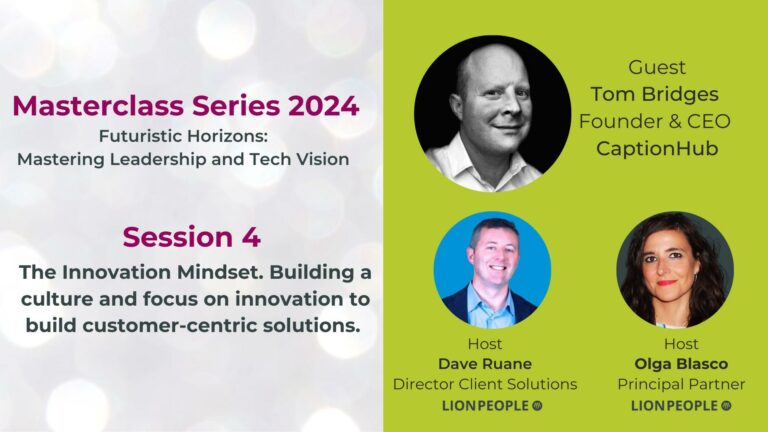Case Study: How to manage a successful merger

As we have mentioned in previous blog posts, when it comes to mergers and acquisitions, a friendly merger between two similar companies is definitely the road less traveled. While many acquisitions are presented as mergers for a variety of reasons, in truth, most deals involve a transaction with one party taking a majority position over the other.
While there are many advantages to a friendly merger, many LSP owners are reluctant to relinquish control and start building a new brand. This is why Lion People Global have prepared this case study, looking at the creation of Argentinian LSP, Latamways, which Olga Blasco, M&A Principal Partner at LPG, consulted on.
Latamways was formed from the merger of Speaklatam and Two Ways Translations. Speaklatam was founded by Cecilia Maldonado and Two Ways Translations was founded by Agustina Pioli and Milena Rossi.
How it started
Cecilia and Agustina came together through Cecilia’s work organizing events in the Argentina network.
“Speaklatam started after I parted ways with my previous business partner of almost 15 years,” Cecilia said.
“At first, we were very cautious about growth, about hiring people. We didn’t know how everything would turn out after the split, especially with long-term clients.
“Of course, we wanted to grow. But how?
“As one of the founders of the first non-profit association in Argentina, I would joke with the founding members about joining forces to become a big company that could compete with other key players in the industry.
“People would laugh and it was difficult to actually have a conversation. Then, I started to talk to some of them individually to find a match but it was hard to align on purpose or strategy.”
The next steps
“So the idea of the merger was always something in the back of my mind and a merger with a similar company like ours at that time made sense,” Cecilia said.
“When I started talking to Two Ways, it wasn’t just me making the decisions anymore. Eugenia Echave, who was the one who took on the heavy lifting when I started Speaklatam, became a partner at Speaklatam shortly after it started.
“We wanted to grow faster and not try to build the company little by little. We went through all the due diligence, we studied all the client base, we talked about what we wanted out of this merger.”
“The first thing that we needed to make sure of was whether we had customers in common, because if we did, the growth was not going to be there,” Agustina said.
“We also decided that we didn’t want to have overlapping tasks. It was very important for us to have a specific role within the company that wouldn’t overlap with others.
“We sought help to understand what our profiles were, and what we were best at, and where we would have a more significant impact in the company.
“The other risk area was the talent database. We needed to make sure that we had enough talent to take care of the increased volume that would result from the merger. And the final question was our staff, our employees. And that’s where it got really tricky.”
According to Agustina, it took about a year to actually materialize the merger and address all the different aspects of the business.
Communication is key
“When we merged, we communicated it to our employees. Speaklatam staff had no problems with the news and were really on board,” Agustina said.
“For Two Ways people the perception was that we were being acquired because we decided to relocate to Speaklatam’s offices.
“Some people didn’t like the idea of having to commute. Most of our staff ended up leaving in the end.
“So looking back, I believe we could have done a better job at communicating our goals and our intentions to our staff. But we learned a lesson the hard way.”
For Cecilia, the differing leadership styles within both companies also had a big impact.
“When we started working together and had all employees in the same room, most of the employees from Two Ways didn’t really like the way we were working,” Cecilia recalls.
“So it was a combination of factors: the commuting, the relocation, and different company cultures. Company culture post-merger is super important, and for us it was tough for a few months.”
Some things are better said in-person
“When we communicated with clients to share the news, most of them were really happy and there wasn’t anything there that sounded like they were worried,” Cecilia said.
“In terms of revenue, our starting point was the sum of the revenue of the previous 2 companies, and our target was a 15% growth in 2017.
“However, it didn’t go as planned and we lost 20% of the combined revenue in Year 1. We were dealing with the adjustments derived from the merger, hiring staff to replace those we lost during the process, merging company cultures, writing new procedures that would match our new reality, etc.
“I think we may have underestimated the need for a more focused and targeted communication strategy with some of our clients, or perhaps we focused a bit too much on internal procedures.”
Getting professional help
“We hired different professionals during the entire process, and Olga was one of them. She actually came up with the name,” Agustina said.
“I knew Olga from a previous work experience and I knew that she was involved with mergers and acquisitions, so I reached out to her and I asked her for advice.” Cecilia said
“We also had a human resources specialist helping us at the very beginning to define our roles within the company, aligning on objectives and long-term goals, etc., ” Agustina added.
How it’s going
“It took us a few years to get over the ‘merger’ state of mind and function as one company,” Cecilia said.
“2020 was the first year that we saw a 40% growth and last year we experienced a 30% growth.”
“Despite the great results, and the fact that we now have a much improved structure, we want to continue to develop as a company. Part of our identity is the commitment to improvement and constant change. So, yes, I would say that the merger was a success.”
This case study is part of our M&A Masterclass series, which can be downloaded in full here.
You can watch the full interview with Cecila and Agustina, as well as many other interviews with industry experts and all the latest in buyer and seller-side tactics from the experts at Lion People Global.






